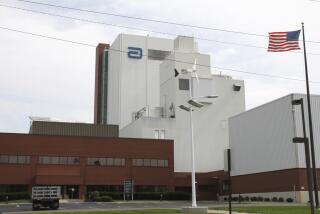Company to Stop Making the Contraceptive Sponge : Birth control: Whitehall-Robins says upgrading plant to meet rules would cost too much.
- Share via
NEW YORK — The maker of the Today Sponge, once the most popular over-the-counter contraceptive for women, is discontinuing the product, saying it can’t meet stringent new government safety rules.
Whitehall-Robins Healthcare, which voluntarily suspended production of the sponges last year, said Tuesday that upgrading its manufacturing plant to meet the rules would cost too much. Whitehall is the world’s only maker of contraceptive sponges.
The Food and Drug Administration last year questioned the purity of water and air at the plant where the sponges were made. A spokesman said Tuesday that the agency was only following longstanding safety guidelines.
Birth control advocates decried the loss of the sponge, saying it further restricts contraceptive choices.
Although the number of women who used the sponge was small compared to condoms or prescription products such as the pill, it had an important niche, said Beth Frederick, spokeswoman for Alan Guttmacher Institute, a reproductive health research organization in New York.
The decision is likely to have little impact on Whitehall, a division of the drug and food conglomerate American Home Products Corp. At its peak in 1993, the sponge accounted for about $17 million of American Home’s $8 billion in annual sales.
The sponge was introduced in 1983 and was made at a relatively old factory in Hammonton, N.J., where Whitehall also made products such as Preparation H hemorrhoid products and Dristan nasal spray.
The sponge was more popular than spermicides and suppositories because it could be inserted into the vagina up to 24 hours before sex. By 1993, it had about 29% of the $62-million market for female over-the-counter contraceptives.
However, its appeal was limited by a relatively high 8% failure rate, even with correct use. Its market share of all female contraceptives--including prescription products--peaked at about 2%, Whitehall said.
In 1993, an inspection turned up unacceptably high bacteria rates at the Hammonton plant.
More to Read
Inside the business of entertainment
The Wide Shot brings you news, analysis and insights on everything from streaming wars to production — and what it all means for the future.
You may occasionally receive promotional content from the Los Angeles Times.










